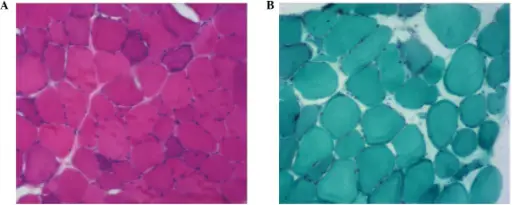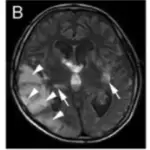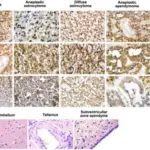Myoclonic epilepsy and ragged red fibers (MERRF) is an inherited mitochondrial disorder characterized by myoclonus epilepsy, ataxia, generalized seizures, and myopathy.
What is the Pathology of Myoclonic epilepsy and ragged red fibers (MERRF)
Etiology: The cause of Myoclonic epilepsy and ragged red fibers (MERRF) is mutations in the mitochondrial DNA.
Genes involved: Mutations in the MT-TK gene.
Pathogenesis: The sequence of events that lead to myoclonic epilepsy and ragged red fibers (MERRF) is pathogenic variants in mtDNA transmitted by maternal inheritance.
Histology: The histology associated with myoclonic epilepsy and ragged red fibers (MERRF) shows red ragged fibers and focal cytochrome c oxidase (CCO) deficiency. Along the length of single muscle fibers, defects in CCO activity were distributed segmentally with blurred borders.
How does Myoclonic Epilepsy and Ragged Red Fibers (MERRF) Present?
Patients with Myoclonic epilepsy and ragged red fibers (MERRF) have equal male and female predominance. The symptoms, features, and clinical findings associated with Myoclonic epilepsy and ragged red fibers (MERRF) include myoclonus, ataxia, optic atrophy, and epilepsy.
How is Myoclonic Epilepsy and Ragged Red Fibers (MERRF) Diagnosed?
Myoclonic epilepsy and ragged red fibers (MERRF) is diagnosed by medical history, symptoms, physical exam, and laboratory test results in order to make a diagnosis. Genetic testing is the main test of choice.
How is Myoclonic Epilepsy and Ragged Red Fibers (MERRF) Treated?
Myoclonic epilepsy and ragged red fibers (MERRF) has no cure.
What is the Prognosis of Myoclonic Epilepsy and Ragged Red Fibers (MERRF)?
The prognosis of myoclonic epilepsy and ragged red fibers (MERRF) is globally poor because of the progressive nature of the disease.



